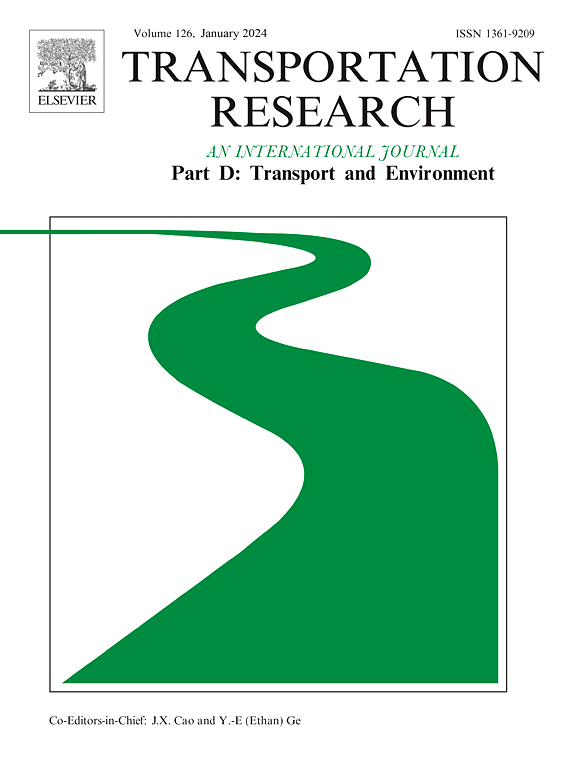运输与二氧化碳排放脱钩:墨西哥、西班牙和美国:趋势分析
IF 7.7
1区 工程技术
Q1 ENVIRONMENTAL STUDIES
Transportation Research Part D-transport and Environment
Pub Date : 2024-11-15
DOI:10.1016/j.trd.2024.104510
引用次数: 0
摘要
衡量经济活动、地面运输(公路和铁路)和二氧化碳排放之间(脱)耦合的现有方法并未捕捉到脱耦的复杂性。本研究旨在促进对(脱)耦合的理解。研究使用 17 个变量组成了三组变量。通过一个比率将每个变量与其他变量联系起来,得到一个与耦合-脱钩类别相对应的指标。总共分析了三个国家的 36 个指标(按国家分列)。结果显示,运输量的变化比例高于经济活动(具体化)。相反,二氧化碳排放量的变化在比例上小于经济活动和地面运输量的变化(脱碳化),尽管墨西哥需要付出更大的努力。此外,脱钩在总体水平上是明显的,而耦合在分类水平上是明显的。最后,这些特征的结合有助于制定实现可持续交通的政策。本研究的一个局限性是未包括航空和海运。本文章由计算机程序翻译,如有差异,请以英文原文为准。
Decoupling transport-CO2 emissions: Mexico, Spain and The USA: A trend analysis
Existing methodologies to measure (de)coupling among economic activity, surface transport (road and rail), and CO2 emissions have not captured the complexity of decoupling. This study aims to contribute to the understanding of (de)coupling. Three groups of variables were formed (using 17 variables). By relating each variable to the others through a ratio, an indicator is obtained that corresponds to a coupling-decoupling category. In total, 36 indicators (by country) were analysed for the three countries. The results reveal that transport volume changes proportionately more than economic activity (materialization). Conversely, CO2 emissions change proportionately less than do economic activity and surface transport volume (decarbonization), although Mexico requires greater efforts. Additionally, decoupling is tangible at aggregated levels, while coupling is evident at disaggregated levels. Finally, the combination of these features contributes to the formulation of policies for achieving sustainable transport. One limitation of this study is the exclusion of air and maritime transport.
求助全文
通过发布文献求助,成功后即可免费获取论文全文。
去求助
来源期刊
CiteScore
14.40
自引率
9.20%
发文量
314
审稿时长
39 days
期刊介绍:
Transportation Research Part D: Transport and Environment focuses on original research exploring the environmental impacts of transportation, policy responses to these impacts, and their implications for transportation system design, planning, and management. The journal comprehensively covers the interaction between transportation and the environment, ranging from local effects on specific geographical areas to global implications such as natural resource depletion and atmospheric pollution.
We welcome research papers across all transportation modes, including maritime, air, and land transportation, assessing their environmental impacts broadly. Papers addressing both mobile aspects and transportation infrastructure are considered. The journal prioritizes empirical findings and policy responses of regulatory, planning, technical, or fiscal nature. Articles are policy-driven, accessible, and applicable to readers from diverse disciplines, emphasizing relevance and practicality. We encourage interdisciplinary submissions and welcome contributions from economically developing and advanced countries alike, reflecting our international orientation.

 求助内容:
求助内容: 应助结果提醒方式:
应助结果提醒方式:


